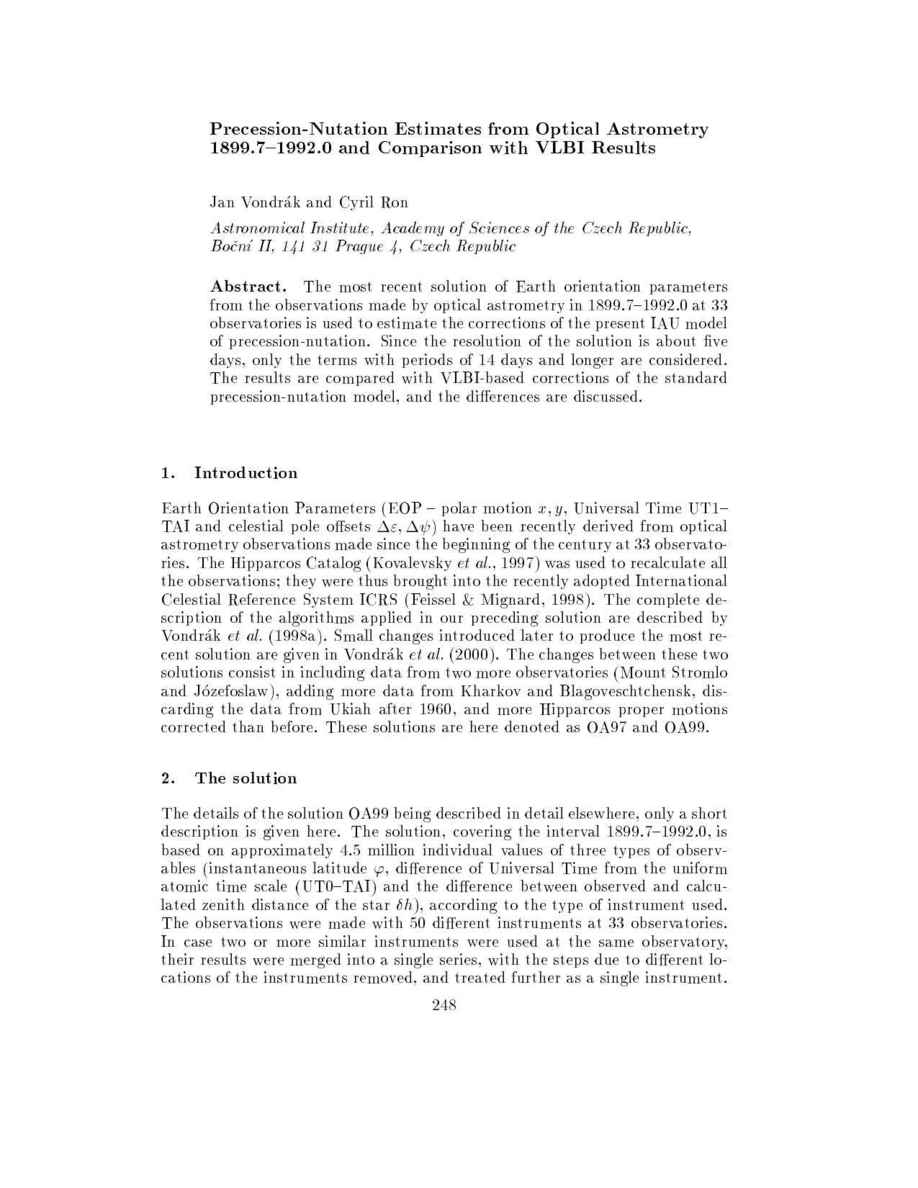
Precession-Nutation Estimates from Optical Astrometry
1899.7{1992.0 and Comparison with VLBI Results
Jan Vondrak and Cyril Ron
Astronomical Institute, Academy of Sciences of the Czech Republic,
Bocn II, 141 31 Prague 4, Czech Republic
Abstract.
The most recent solution of Earth orientation parameters
from the observations made by optical astrometry in 1899.7{1992.0 at 33
observatories is used to estimate the corrections of the present IAU model
of precession-nutation. Since the resolution of the solution is about ve
days, only the terms with periods of 14 days and longer are considered.
The results are compared with VLBI-based corrections of the standard
precession-nutation model, and the di erences are discussed.
1.
In
tro duction
Earth Orientation Parameters (EOP { polar motion
x
y
, Universal Time UT1{
TAI and celestial pole o sets
"
) have been recently derived from optical
astrometry observations made since the beginning of the century at 33 observato-
ries. The Hipparcos Catalog (Kovalevsky et al., 1997) was used to recalculate all
the observations they were thus brought into the recently adopted International
Celestial Reference System ICRS (Feissel & Mignard, 1998). The complete de-
scription of the algorithms applied in our preceding solution are described by
Vondrak et al. (1998a). Small changes introduced later to produce the most re-
cent solution are given in Vondrak et al. (2000). The changes between these two
solutions consist in including data from two more observatories (Mount Stromlo
and Jozefoslaw), adding more data from Kharkov and Blagoveschtchensk, dis-
carding the data from Ukiah after 1960, and more Hipparcos proper motions
corrected than before. These solutions are here denoted as OA97 and OA99.
2.
The
solution
The details of the solution OA99 being described in detail elsewhere, only a short
description is given here. The solution, covering the interval 1899.7{1992.0, is
based on approximately 4.5 million individual values of three types of observ-
ables (instantaneous latitude
'
, di erence of Universal Time from the uniform
atomic time scale (UT0{TAI) and the di erence between observed and calcu-
lated zenith distance of the star
h
), according to the type of instrument used.
The observations were made with 50 di erent instruments at 33 observatories.
In case two or more similar instruments were used at the same observatory,
their results were merged into a single series, with the steps due to di erent lo-
cations of the instruments removed, and treated further as a single instrument.
248
